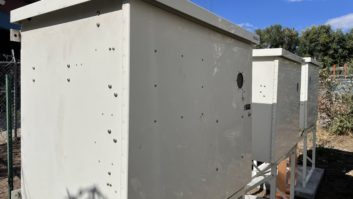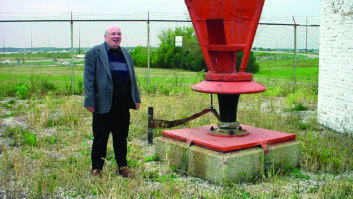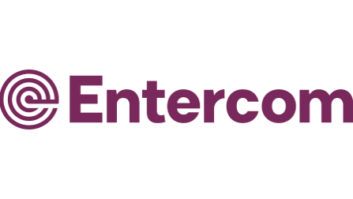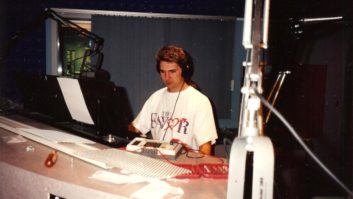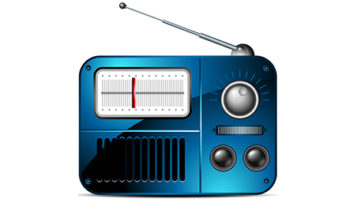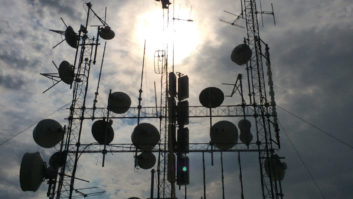Clear Channel Denver
Dec 1, 2000 12:00 PM, Chriss Scherer
A big job a mile high Moving seven stations into a new facility is no small task. When Jacor decided to move KOA-AM, KHOW-AM, KTLK-AM, KHIH-FM, KRFX-FM, KBPI-FM, and KTCL-FM into a new facility, station management and engineering knew that outside help would be needed. Planning for the new facility began in October 1998. A strict timetable was established and had to be maintained because the lease for the old studio building expired in September 1999. During the facility construction, the station ownership was transferred to Clear Channel Communications.
When the facility was completed, it was the largest radio facility built in the United States. It retained this honor until recently, when the studios for XM Satellite Radio were completed in Washington, DC.
The new building, located in the Denver Tech Center, has five floors. The main rack room is in the basement and has 46 racks. There is enough room to add four more racks if necessary. The FM studios are on the third floor, and the AM studios are on the fourth floor. The third and fourth floors also have rack rooms, with six racks on the third floor and five racks on the fourth floor. The penthouse has a rack room with eight racks for microwave and satellite equipment. All four rack rooms house audio router frames, which are interconnected via fiber, RS-422, Ethernet, and a wordclock signal on RG-58 cable.
The entire building has 87,145 square feet of gross space. There are 3,370 square feet of storage in the basement, 5,100 square feet of internal parking and 5,500 square feet of extra space that can be leased to a tenant.
Going live The first station, KHIH-FM, went on the air from the new studios on October 9, 1999. The other three FMs, KRFX, KBPI and KTCL, moved in over the following days. Once the FM stations were moved, the AM stations began their transition. KTLK-AM was the first AM to move. All seven stations were on the air by mid-November 1999. The entire installation process took 14 weeks.
Because of the complexity of routing so many audio sources, an integrated router/console design was chosen. For this installation, the Klotz VADIS was picked. Each studio has access to any audio source in the facility. For added backup, any studio can become an air studio or production studio by recalling a preset, and all the necessary audio and control logic is routed to the corresponding room. The VADIS serves as the digital-audio, fiber-optic backbone for 20 news/sports workstations, 24 control rooms and a news command center.
By using fiber-optic cable to interconnect all the audio router frames, the installation time was dramatically reduced. The entire control layer of the routing system (mixing consoles, logic interface, PCs) lives on a single LAN. The use of fiber-optic cable also saved a considerable amount of room. Copper wiring would have occupied substantially more space.
Because most of the router frames are installed in the basement rack room, all of the shared audio sources, such as the on-air playback system, codecs and tuners, are located there. All audio is recorded and played back from a Prophet Systems Audio Wizard system running on a Novell network. There is one file server and 12 audio servers. The system includes four digital reel-to-reels and 29 ACU-1 audio switchers.
The total system storage capacity is 160GB, which is handled by twelve 18GB RAID drives. There are 63 workstations on the system. On the AM side there are three for the control rooms, three for screener positions, six for air/talk, three for news and three for the creative production studios. For the FM stations there are four for the control rooms, four for the auxiliary control rooms, four for creative production and four for the music directors. Several workstations are shared by both the AMs and FMs: two in news command, three for commercial production, seven for program directors, nine for traffic, three for continuity, one for sales promotions, two for engineering, one for dial-up, and one for overnight use.
All the computers are kept in the rack rooms. The monitors, keyboards and mice are connected through Cybex PC extenders.
Making connections A project of this magnitude needs a considerable amount of wire and cable. For this project, 110V, AES-3-compliant Gepco 5526 was used throughout the facility. For interconnections between studios and rack rooms, the eight-pair version 552608 was used. This cable is very flexible, which was important to the installers in pulling cable and preparing it for termination on the punch blocks. Four cables can be installed in the punch block cradles.
Instead of traditional Siemons 66M punch blocks, German-made Krone 25-pair punch blocks were used. The biggest advantage to this block is that it has twice the capacity of the 66M block (up to 32 wire pairs) but fits into the same mounting cradle. The design of the fork in which each wire is placed also bites into the wire better that than the traditional style. This is important because the insulation of the digital cable is thicker than standard analog wire types. The Krone blocks have an added advantage with a built-in patch capability. A special clip can be inserted into the block to interrupt the signal. There are 625 Krone blocks in the entire facility, attesting to its size. The only distribution amplifiers being used in the facility are for analog audio feeds that do not need to be digitally routed, such as EAS monitor inputs and feeds from off-air monitors.
All seven stations use Harris Intraplex T1 STLs. Both T1 landlines and Glenayre 5.4GHz spread spectrum links are used for primary communication. For added backup, analog equalized telephone circuits and 950MHz STLs are also installed.
The newsroom is built around a WireReady system, which is used throughout the Clear Channel stations. This installation has 60 workstations for news, sports and the AM air talent. The stations receive news feeds from the Associated Press, Sportsticker, ABC and CBS. WireReady is used for text; ControlReady is used for audio capture and storage; and StormReady handles school and business closings. The audio capture machines have two sound cards to handle the ABC and CBS feeds. The Clear Channel intranet allows text and audio files to be shared with other Clear Channel stations. (See Managing Technology, September 2000 for more on the Clear Channel intranet.)
Backup power for the facility is provided by a 750kW, 480 volt Cummins diesel generator with a 3,000 gallon fuel tank and a 240kW, 480 volt APC UPS. The penthouse rack room houses the satellite equipment. There is a Ku-band uplink and three C-band downlink dishes. C-band receivers include units from Starguide Digital, Scientific Atlanta and Fairchild.
Since there was only one year to complete the project once the design plans were approved, a considerable amount of work was completed off-site before any part of the new building was ready for occupancy. RDA Systems prewired all the racks and punch blocks in its St. Louis facility. This allowed the studio construction to proceed while the building was being constructed.





